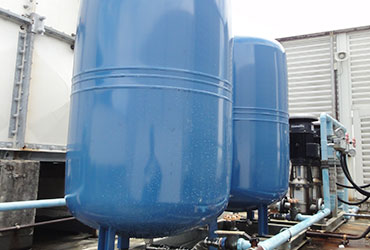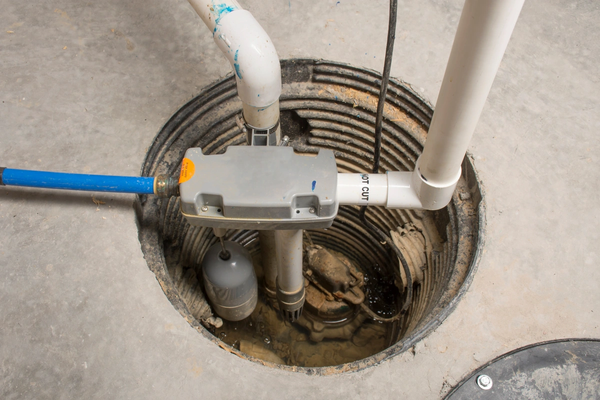Helpful Strategies for Tackling Low Water Pressure in Your Home
Helpful Strategies for Tackling Low Water Pressure in Your Home
Blog Article
Right here on the next paragraphs yow will discover a good deal of quality resources in relation to Low Water Pressure in the House?.

Low tide pressure in your home can be a frustrating trouble, impacting whatever from showering to cleaning dishes. If you're experiencing weak water circulation, there are several possible reasons and services to check out. In this guide, we'll talk about common factors for low tide pressure and useful actions to resolve the issue properly.
Introduction to Low Water Pressure
Low water stress takes place when the circulation of water from your taps, showers, and various other fixtures is weak than common. This can make day-to-day tasks a lot more difficult and less efficient. Comprehending the sources of low tide pressure is important to locating the ideal remedy.
Usual Sources Of Low Tide Stress
Faulty Stress Regulators
Pressure regulators are in charge of preserving regular water pressure in your home. If they malfunction, it can lead to low water stress or unequal circulation throughout the house.
Community Supply Of Water Issues
Occasionally, the problem lies outside your home. Municipal supply of water problems, such as main line leakages or upkeep job, can temporarily minimize water stress in your location.
Pipeline Obstructions
Gradually, pipes can come to be blocked with mineral deposits, sediment, or particles, limiting the circulation of water. This is a common problem in older homes with galvanized steel pipelines.
Deterioration
Rust within pipelines can bring about leakages and lowered water stress. Corrosion buildup can constrict water circulation, specifically in aging plumbing systems.
Just How to Detect Low Tide Stress
Checking Pipes
Evaluate visible pipes for indicators of leaks, corrosion, or clogs. Focus on any unusual noises, such as banging or rattling pipes, which can suggest problems within the plumbing system.
Consulting with a Plumber
If you're not able to identify the reason for low water pressure, take into consideration hiring an expert plumber to carry out a complete assessment. They can determine underlying problems and advise ideal remedies.
Inspecting Faucets and Components
Beginning by examining the water stress at various faucets and components throughout your home. If the issue is isolated to details areas, it might suggest localized troubles.
Do It Yourself Solutions to Fix Low Water Stress
Flushing Hot Water Heater
Debris accumulation in the water heater can restrict circulation and lower performance. Purging the tank periodically assists get rid of sediment and maintain optimal performance.
Examining Stress Regulator
Guarantee that the stress regulator is working correctly. Adjusting or changing the regulator can help restore appropriate water stress throughout your home.
Cleaning Up Aerators and Showerheads
Natural resources can gather in aerators and showerheads, minimizing water circulation. Eliminate and cleanse these elements routinely to enhance water pressure.
Clearing Up Clogs in Pipes
For minor obstructions, attempt using a plumbing serpent or chemical drain cleaner to clear obstructions in pipes. Be cautious when making use of chemicals and follow safety and security guidelines.
When to Call a Professional Plumber
If do it yourself initiatives stop working to resolve the issue or if you suspect substantial plumbing issues, it's ideal to look for support from a certified plumber. They have the expertise and tools to address intricate issues securely and effectively.
Safety Nets to Preserve Water Stress
Installing a Pressure Booster
Think about installing a stress booster pump to boost water stress in locations with regularly reduced flow. This can be specifically advantageous for multi-story homes or residential properties with high-demand components.
Tracking Water Usage
Be mindful of water use habits and prevent overtaxing the plumbing system. Straightforward changes, such as astonishing showers and washing tons, can aid maintain sufficient water pressure.
Routine Maintenance
Arrange routine upkeep for your plumbing system to avoid problems such as deterioration, leakages, and blockages. Resolving small problems early can aid avoid more significant repair work later on.
Final thought
Taking care of low tide pressure can be irritating, but identifying the underlying reasons and carrying out proper options can recover ideal circulation throughout your home. Whether it's cleaning aerators, examining pipelines, or seeking advice from a plumber, taking proactive steps can guarantee a steady supply of water for your day-to-day demands.
FOUR WAYS TO FIX LOW WATER PRESSURE NOW
Turning on a shower or faucet only to find the water comes out in a sad, slow drizzle is never a good feeling. How exactly are you supposed to wash a pan or take a quick shower when it takes 10 minutes just to rinse off a little soap? The good news is that when your water pressure is bad, there's always a cause: typically one that can be easily fixed. Here are some of the most common causes of low pressure and what you can do to fix the issue:
DEBRIS AND MINERAL DEPOSIT BUILDUPS
If you notice low water pressure from just one or two of the fixtures in your house, the problem likely has to do with debris buildup. Water is full of minerals and other debris, all of which can accumulate in your pipes and on your fixtures. This can cause a blockage that affects how much water flows through. To fix this, try filling a small plastic bag with white vinegar, and use a rubber band to hang it around your showerhead or faucet. Let the head of the fixture soak for a few hours, and the vinegar should loosen the deposits.
WATER LEAKS
Leaks are another common cause of low water pressure. If water is flowing out of your plumbing through a hole or crack before it can reach your fixture, the pressure coming out of the faucet or showerhead will be lower. A plumbing professional is your best bet for finding and repairing a leak in your water supply pipes.
Leaks are another common cause of low water pressure. If water is flowing out of your plumbing through a hole or crack before it can reach your fixture, the pressure coming out of the faucet or showerhead will be lower. A plumbing professional is your best bet for finding and repairing a leak in your water supply pipes.
A VALVE ISSUE
If you have low water pressure throughout your home, check your main shut-off valve to make sure it's completely open. You may also want to see if there's a pressure-reducing valve installed. If there is, have a plumber help you adjust the settings to get the pressure you're looking for.
OTHERS USING WATER
Believe it or not, your low water pressure could be caused by your neighbors. If you notice low pressure at certain times of day, it may be because you and the people living next to you have similar schedules - when everyone is showering at the same time, the pressure will be lower in every home. Low pressure throughout the neighborhood may also be caused by an issue with your municipal water supply. If that's the case, call the supplier to see if they're working on the issue.
https://www.rotorooter.com/blog/water-leaking/low-water-pressure-fixes/

Do you appreciate reading about 4 Ways to Troubleshoot Low Water Pressure? Leave a remark further down. We would be happy to know your opinion about this blog entry. We are looking forward that you visit us again later on. Enjoyed reading our entry? Please share it. Help others find it. Thanks a bunch for being here. Come back soon.
Book Your Service Report this page